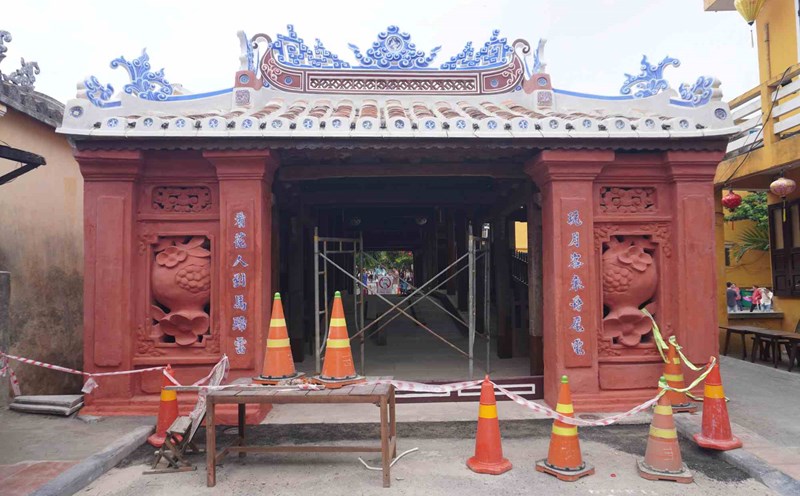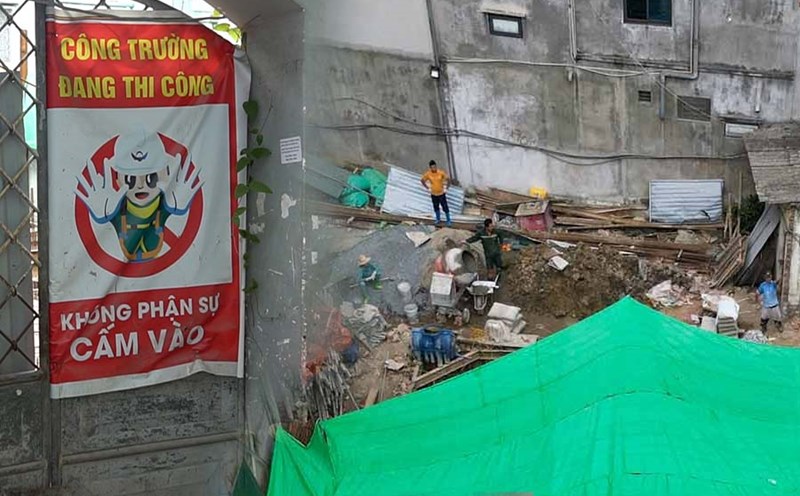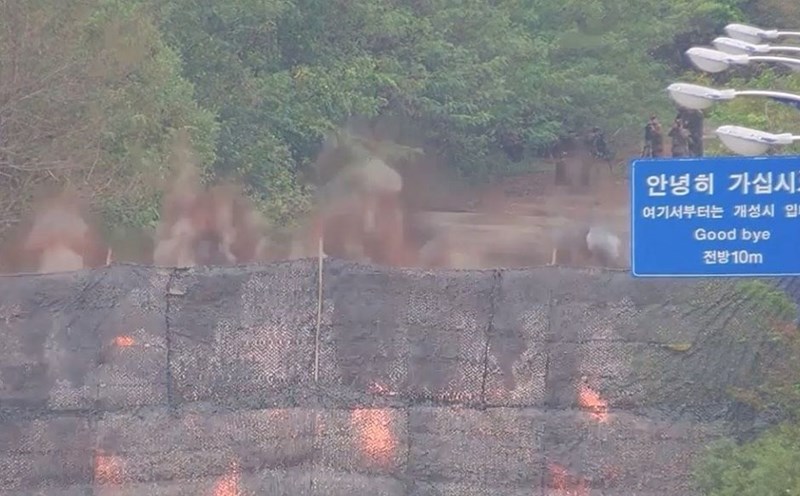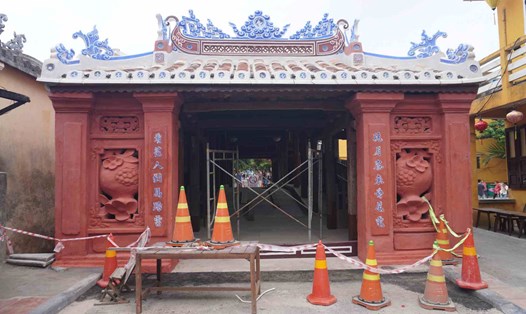Restoration of a 400-year-old structure
The Bridge Pagoda is listed as a national cultural and historical monument, so its restoration must comply with the Cultural Heritage Law and Circular 15 of 2019 by the Ministry of Culture, Sports and Tourism, which stipulates the preservation, restoration, and rehabilitation of monuments.
In an interview with Lao Dong, Mr. Tran Dinh Thanh - Deputy Director of the Department of Cultural Heritage (Ministry of Culture, Sports and Tourism) said that the ministry and the Department of Cultural Heritage have appraised the project dossier, design, and the restoration process. The department also coordinated with the People's Committee of Quang Nam province to organize seminars and conferences, inviting many professors from both inside and outside the country to contribute opinions on the monument restoration project. All information about this project has been publicly disclosed locally, from the implementation content, design, to the implementation process. The department also coordinated with the specialized agency of Quang Nam province and Japanese experts in the process of designing and implementing the construction plan.
While most criticisms of the new appearance of the Bridge Pagoda come from the “online community,” some experts in the field of heritage and monuments expressed agreement with the project's restoration results restoration of the Bridge Pagoda.
Architect Tran Duc Anh Son affirmed that the restoration of the Bridge Pagoda complied with technical requirements. “I agree with the 'dismantling restoration' method chosen for the Bridge Pagoda restoration project, after organizing expert seminars to evaluate and select the method. The restoration work was methodical, scientific, serious, achieving good restoration results, returning to Hoi An a Bridge Pagoda true to its original appearance but more solid and sturdy,” wrote Architect Tran Duc Anh Son on his personal Facebook.
“After more than 400 years of existence in the harsh weather conditions of Central Vietnam, the Bridge Pagoda had deteriorated and was severely damaged: The foundation had subsided and tilted; many wooden structures were termite-eaten and decayed; the brick wall system was peeling... causing the overall structure of the Bridge Pagoda to be somewhat deformed; architectural connections weakened, making the structure susceptible to collapse, especially during storms.
Therefore, choosing the 'dismantling restoration' method to thoroughly handle the foundation: adjusting, reinforcing, and strengthening to increase load-bearing capacity; dismantling wooden components to replace decayed parts; replacing broken roof tiles, reinforcing brick walls at both ends of the bridge; replacing damaged wooden parts on the bridge deck and railings is necessary. If the 'partial restoration' method were chosen, it would not thoroughly address the chronic issues of the Bridge Pagoda, as seen in the six previous restorations.”
Mr. Nguyen Van Hieu - Head of the research department of Van Thien Y Joint Stock Company said: “The results of this Bridge Pagoda restoration project have truly delighted heritage workers and heritage lovers nationwide.”
Mr. Hieu believes that monuments in Vietnam have rarely been in the cleanest, most original state, often having to coexist with moss, mold, cracks, dust, decayed wood, cracked stone, leaning walls... to the extent that people have become accustomed to seeing these deteriorations as the soul and style of a monument. Therefore, any noticeable change will inevitably provoke a strong reaction.
However, Mr. Nguyen Van Hieu believes that public attention to the Bridge Pagoda has a positive aspect, showing concern for cultural heritage. And if there are more successful restoration projects like the Bridge Pagoda or the tombs in Hue, it will provide a more accurate perspective for people on restoration and preservation activities of heritage and monuments.
How to view heritage restoration?
This is not the first time domestic public opinion has voiced concerns about the appearance of monuments and cultural heritage after restoration.
In 2022, the French colonial villa at 49 Tran Hung Dao Street, Hoan Kiem District, Hanoi became the center of controversy because it suddenly became “new, losing its ancient mossy look” after completing the restoration work. However, similar to the Bridge Pagoda case, heritage and architectural experts at that time affirmed that the restoration work on this villa “is a model in heritage restoration.” The restoration unit thoroughly researched the remaining documents, especially regarding the paint color, which was “mixed to match the original as closely as possible.”
Heritage experts heritage believe that after restoration, structures always “look newer” compared to the old look often seen before, and over time, the ancient look will be restored.
“The seemingly new colors of the Bridge Pagoda after restoration will 'subdue' after just a few seasons of rain and sun. The important thing is that the core values of the Bridge Pagoda in terms of history, culture, art, along with emotional and long-term usage values, still exist with the community, nation, and humanity, not lost at all,” analyzed Architect Tran Duc Anh Son.
Thus, it can be seen that the restoration of monuments and heritage in our country has been carried out cautiously, effectively, and with public opinion in mind by experts and state management agencies over time. However, from the Bridge Pagoda story, perhaps relevant units should consider announcing the restoration results through images and documents via press agencies or social networks before officially unveiling, while also explaining to the public to better understand what they are about to witness, instead of waiting for public complaints before explaining.














